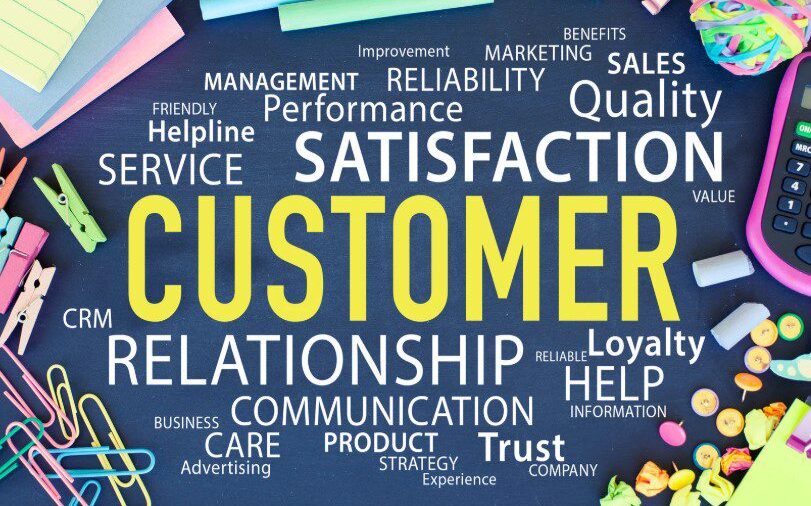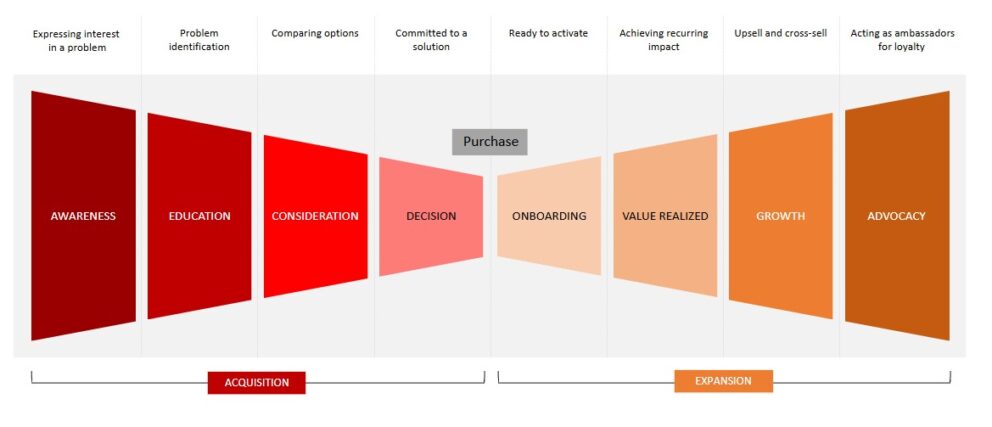3. Programmatic
Mindset: Customer voice is an intentional part of our GTM strategy.
Signals:
- Active advocacy or customer marketing program
- Consistent communication and content tailored to existing customers
- CLG activities aligned to specific business goals (e.g., expansion, referrals)
Marketing’s Role: Owner of a defined post-sale motion
Risks: Plateauing impact if customer efforts aren’t personalized or multi-channel
What you can do: Take it further by building integrated plays across lifecycle stages—like customer co-marketing, peer-to-peer events, and community-led campaigns.4
4. Predictable
Mindset: Customers are not just end users—they’re growth partners.
Signals:
- Advocates embedded in awareness, validation, and expansion efforts
- Customer insights drive messaging, content, and roadmap influence
- Clear, measurable impact on NRR, CAC, and pipeline velocity
Marketing’s Role: Orchestrator of a cross-functional, customer-powered growth engine
Risks: Low—this is your flywheel
What you can do: Now’s the time to optimize. Create feedback loops between CS, Product, and Marketing. Build a data-driven customer journey map that fuels your next growth horizon.
Customer-Led Growth Maturity Diagnostic
Want a quick snapshot of where your organization stands? Use the table below to self-assess your CLG maturity across five key dimensions.
| Area | Reactive | Opportunistic | Programmatic | Predictable |
|---|---|---|---|---|
| Customer Advocacy | No process in place | Ad-hoc requests from a few known customers | Formal program exists with rotating advocates | Integrated into campaigns, lifecycle, and GTM |
| Post-Sale Marketing | None or minimal | Basic email nurture or event invites | Segmented content and touchpoints by customer stage | Personalized journeys tied to product adoption and value |
| CS + Marketing Collaboration | Rare or informal | Occasional handoffs or requests | Regular syncs and shared goals | Shared playbooks, dashboards, and reporting |
| Customer Insights Usage | Limited to surveys or NPS | VoC collected but not actioned | Insights inform content and enablement | Real-time insights shape GTM strategy and product roadmap |
| Impact on Pipeline & Growth | No measurable contribution | Case-by-case influence (e.g., reference wins) | Clear metrics on retention, upsell, and referrals | CLG efforts tied to CAC, NRR, and pipeline velocity |
Scoring Your Maturity
- Mostly Reactive: Start with foundational plays—customer onboarding, early success stories, CS-Marketing alignment.
- Mostly Opportunistic: Prioritize structure and repeatability. Build your first true advocacy pipeline and success metrics.
- Mostly Programmatic: Focus on scale, personalization, and cross-channel integration.
- Mostly Predictable: You’re leading the way. Double down on customer-powered innovation and thought leadership.
Conclusion
Customer-Led Growth isn’t a one-time campaign—it’s a maturity journey. As your teams move from fragmented post-sale efforts to orchestrated customer engagement, you unlock more than retention or advocacy—you create momentum.
When marketing becomes a consistent driver of customer value after the sale, growth becomes more sustainable, measurable, and scalable.
Want to map where your organization sits on the CLG maturity curve—and what it’ll take to move forward? Let’s chat. Email us at acceleration@heinzmarketing.com to schedule a working session.






